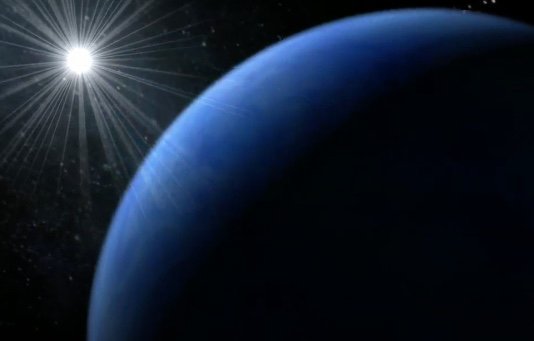Super-Earths, Water Worlds, and hot Jupiters
In our solar system, the planets seem to fit fairly nicely into two major categories: (1) small, rocky planets close to the Sun and (2) large, hydrogen-rich planets far from the Sun. But is it possible that other solar systems might have planets that don’t fit into these two simple categories? The answer appears to be yes.
Scientists now know of many thousands of planets around other stars, which we call extrasolar planets or exoplanets for short. Unfortunately, because other stars are so far away (as discussed in Section 1.2.4), we don’t have a lot of information about these exoplanets. In particular, we don’t yet have clear images of any of them; so far, even our most powerful telescopes have obtained only a few images in which exoplanets appear as little dots around their stars. Instead, for the vast majority of these planets, we know they exist only through indirect observations, such as by noticing the gravitational tugs they exert on their stars, or by noticing the slight dimming of a star that occurs when a planet passes in front of it as seen from Earth.
Nevertheless, indirect measurements can reveal the masses, sizes, and orbital distances of exoplanets. The masses and sizes can be used to calculate average densities, which give us a clue as to whether the planets are rocky, ice-rich, or hydrogen-rich. We can then see whether the exoplanets fit the same patterns of size and distance from their star that we observe for the planets of our own solar system. In most cases they do, but scientists have found some cases that suggest “new” types of planet.
In particular, at least three “new” categories seem likely:
- Super-Earths: In our solar system, Earth is the largest rocky planet. However, some exoplanets appear to be rocky like Earth (based on their densities), but they are significantly larger and more massive than Earth (sometimes by double or triple). Their rocky nature combined with their larger sizes has led scientists to nickname them “super-Earths.”
- Water Worlds: In our solar system, there are no ice-rich worlds that are large enough to count as planets (though some, including Pluto, count as dwarf planets). But other solar systems seem likely to have such worlds. Their larger sizes alone could lead some of these worlds to have thick enough atmospheres to keep some of their “ice” in liquid form; in addition, although these planets must form far from their stars to be ice-rich, some of them may later have their orbits disrupted in a way that pushes them inward, where they might become warm enough for much of their ice to melt. This possible melting of ice explains why scientists refer to these worlds as “water worlds.”
- Hot Jupiters: In our solar system, all the hydrogen-rich planets are far from the Sun. However, scientists have discovered some exoplanets that seem to be large and hydrogen-rich but that orbit very close to their stars. They are therefore called “hot Jupiters,” because they are probably similar to Jupiter in their general characteristics, but being close to their stars heats up their outer layers. (Note: these planets pose a bit of mystery, because as we’ve discussed, hydrogen-rich planets should form in cold regions of a planet-forming disk. So how did they end up close to their stars? While scientists are still debating this question, the most likely answer is that, some time after they formed, their orbits were disturbed in a way that caused them to migrate inward to their current orbits.)



Within the next couple of decades, new and more powerful telescopes should greatly enhance our ability to study exoplanets. Perhaps you will have an opportunity to do some of these studies, and in the process help us learn more about the types of planets that populate our universe.